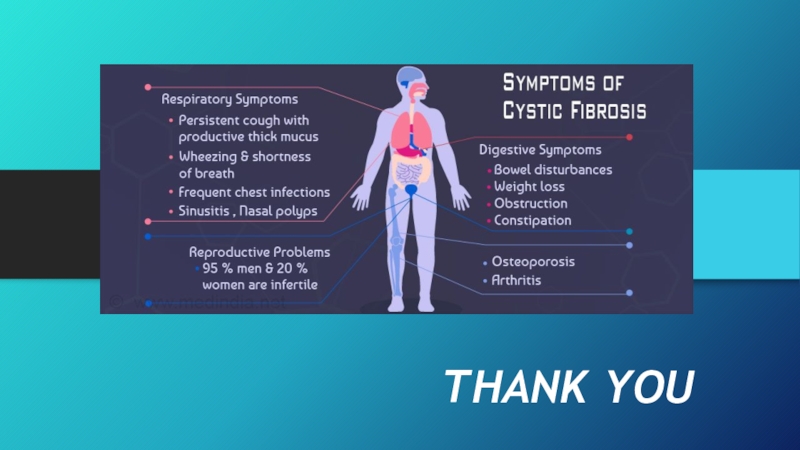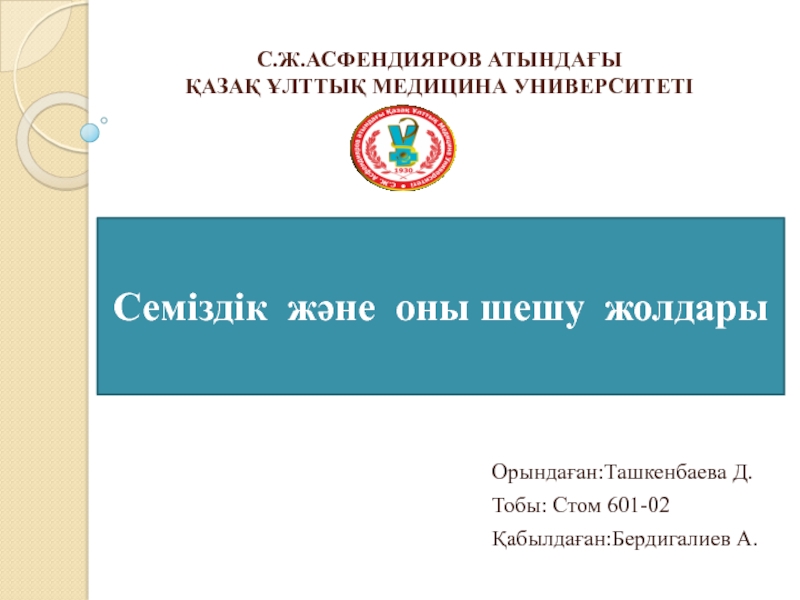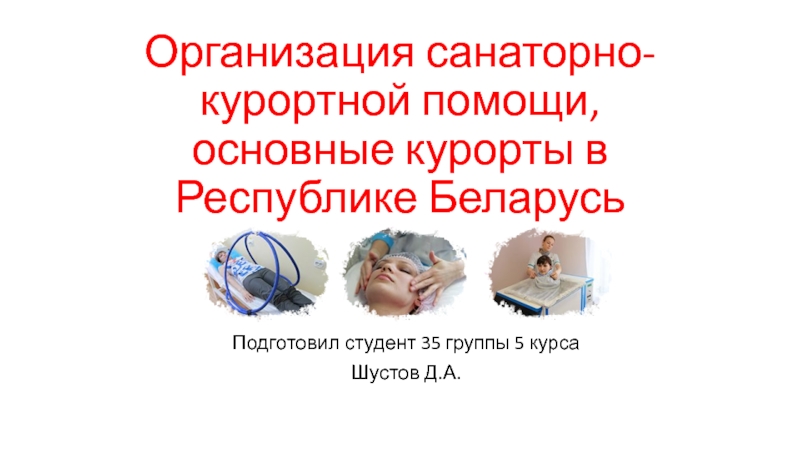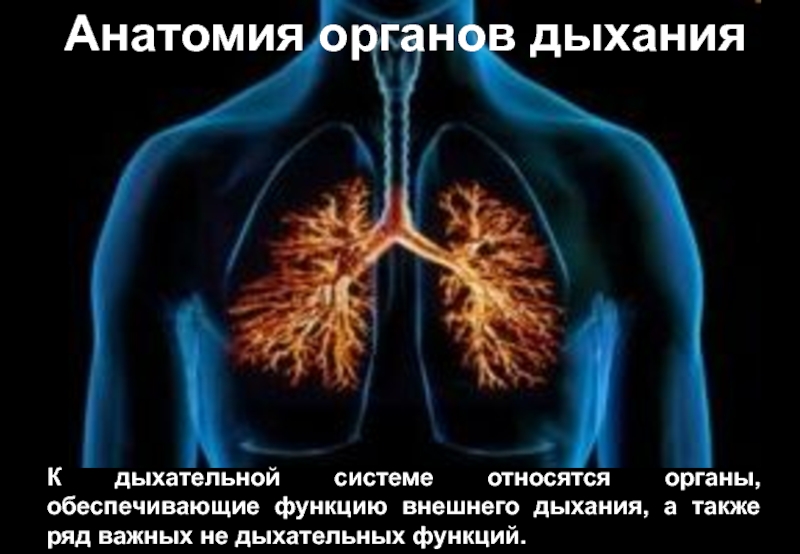Слайд 1PHYLOGENETIC DISORDERS OF RESPIRATORY SYSTEM
VARSHA DODAWAD
L A – 1
194 A
Слайд 2PHYLOGENY AND RESIRATORY DISORDERS
Phylogeny is a useful tool for
taxonomists because it can be used to investigate evolutionary development.
Taxonomy led to the study of phylogeny through the framework of dividing organisms into a hierarchy of taxonomic categories such as family, genus and species.
Phylogenetics is important because it enriches our understanding of how genes, genomes, species (and molecular sequences more generally) evolve.
What are respiratory disorders?
A type of disease that affects the lungs and other parts of the respiratory system. ... Respiratory diseases include asthma, chronic obstructive pulmonary disease (COPD), pulmonary fibrosis, pneumonia, and lung cancer. Also called lung disorder and pulmonary disease
Слайд 4Cystic fibrosis is a genetic respiratory disease caused by a
defective gene that creates thick and sticky mucus that clogs
up tubes and passageways.
CF causes thick mucus to build up and clog certain parts of the body such as the lung. The buildup is caused by an abnormal gene called CFTR (cystic fibrosis transmembrane regulator). CFTR controls the flow of water and salt in and out of the body's cells. Changes cause mucus to become thickened and sticky.
Слайд 5An inherited life-threatening disorder that damages the lungs and digestive
system.
Cystic fibrosis affects the cells that produce mucus, sweat, and
digestive juices. It causes these fluids to become thick and sticky. They then plug up tubes, ducts, and passageways.
Symptoms vary and can include cough, repeated lung infections, inability to gain weight, and fatty stools.
Treatments may ease symptoms and reduce complications. Newborn screening helps with early diagnosis.
Слайд 7Does everyone have the cystic fibrosis gene?
Everyone inherits two copies
of the CFTR (cystic fibrosis transmembrane conductance regulator) gene. However,
some of the inherited copies are mutations. To date, over 700 mutations of the CFTR gene have been identified. A person with CF inherits two mutated copies of the CFTR gene.
Researchers have discovered why females with cystic fibrosis do worse than males. The study is the first to show that the female hormone estrogen promotes the presence of a particular form of bacteria which results in more severe symptoms for female cystic fibrosis patients
Слайд 8Lung disease results from clogging of the airways due to
mucus build-up, decreased muco ciliary clearance, and resulting inflammation. Inflammation
and infection cause injury and structural changes to the lungs, leading to a variety of symptoms. In the early stages, incessant coughing, copious phlegm production, and decreased ability to exercise are common. Many of these symptoms occur when bacteria that normally inhabit the thick mucus grow out of control and cause pneumonia.
In later stages, changes in the architecture of the lung, such as pathology in the major airways (bronchiectasis), further exacerbate difficulties in breathing. Other signs include coughing up blood (hemoptysis), high blood pressure in the lung (pulmonary hypertension), heart failure, difficulties getting enough oxygen to the body (hypoxia), and respiratory failure requiring support with breathing masks, such as bilevel positive airway pressure machines or ventilators. Staphylococcus aureus, Haemophilus influenzae, and Pseudomonas aeruginosa are the three most common organisms causing lung infections in CF patients. The most common infection involves bacterial strain mutation to form a biofilm-forming and sustaining mucoid strain on the lung epithelium, which can result in downstream mechanisms that progress the infection. In addition to typical bacterial infections, people with CF more commonly develop other types of lung disease.
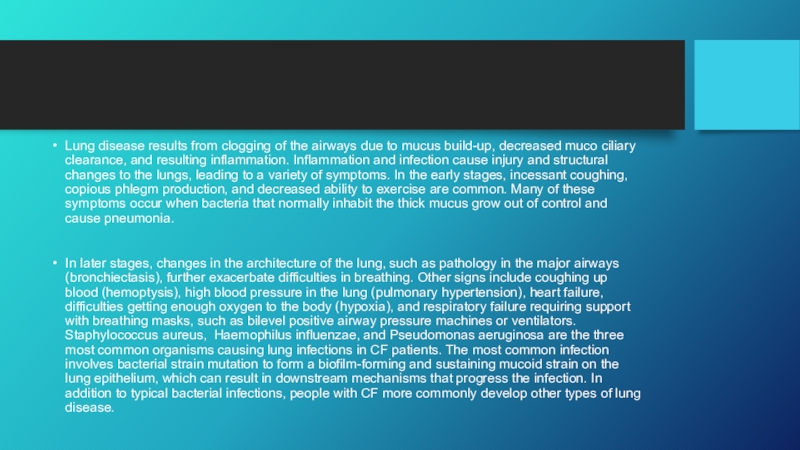
Слайд 10Among these is allergic bronchopulmonary aspergillosis, in which the body's
response to the common fungus Aspergillus fumigatus causes worsening of
breathing problems. Another is infection with Mycobacterium avium complex, a group of bacteria related to tuberculosis, which can cause lung damage and does not respond to common antibiotics. People with CF are susceptible to getting a pneumothorax.
Mucus in the paranasal sinuses is equally thick and may also cause blockage of the sinus passages, leading to infection. This may cause facial pain, fever, nasal drainage, and headaches. Individuals with CF may develop overgrowth of the nasal tissue (nasal polyps) due to inflammation from chronic sinus infections. Recurrent sino nasal polyps can occur in 10% to 25% of CF patients.These polyps can block the nasal passages and increase breathing difficulties.
Cardiorespiratory complications are the most common cause of death (about 80%) in patients at most CF centers in the United States.
Слайд 11DIAGNOSIS AND ANTIBIOTICS
DIAGNOSIS
The location of the CFTR gene on chromosome
7
Cystic fibrosis may be diagnosed by many different methods, including
newborn screening, sweat testing, and genetic testing. As of 2006 in the United States, 10% of cases are diagnosed shortly after birth as part of newborn screening programs. The newborn screen initially measures for raised blood concentration of immunoreactive trypsinogen. Infants with an abnormal newborn screen need a sweat test to confirm the CF diagnosis.
Antibiotics
Many people with CF are on one or more antibiotics at all times, even when healthy, to prophylactically suppress infection. Antibiotics are absolutely necessary whenever pneumonia is suspected or a noticeable decline in lung function is seen, and are usually chosen based on the results of a sputum analysis and the person's past response. This prolonged therapy often necessitates hospitalization and insertion of a more permanent IV such as a peripherally inserted central catheter or Port-a-Cath. Inhaled therapy with antibiotics such as tobramycin, colistin, and aztreonam is often given for months at a time to improve lung function by impeding the growth of colonized bacteria. Inhaled antibiotic therapy helps lung function by fighting infection, but also has significant drawbacks such as development of antibiotic resistance, tinnitus, and changes in the voice. Inhaled levofloxacin may be used to treat Pseudomonas aeruginosa in people with cystic fibrosis who are infected. The early management of Pseudomonas aeruginosa infection is easier and better, using nebulised antibiotics with or without oral antibiotics may sustain its eradication up to 2 years.
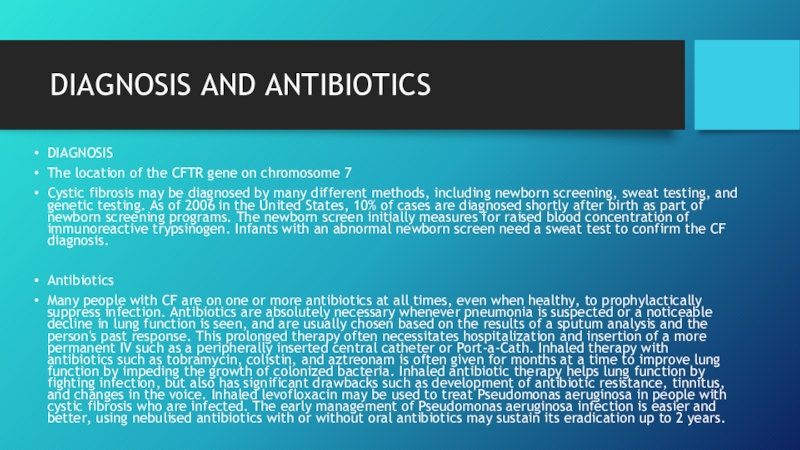
Слайд 13Transplantation
Lung transplantation often becomes necessary for individuals with CF as
lung function and exercise tolerance decline. Although single lung transplantation
is possible in other diseases, individuals with CF must have both lungs replaced because the remaining lung might contain bacteria that could infect the transplanted lung. A pancreatic or liver transplant may be performed at the same time to alleviate liver disease and/or diabetes.[114] Lung transplantation is considered when lung function declines to the point where assistance from mechanical devices is required or someone's survival is threatened
Quality of life
Chronic illnesses can be very difficult to manage. CF is a chronic illness that affects the "digestive and respiratory tracts resulting in generalized malnutrition and chronic respiratory infections". The thick secretions clog the airways in the lungs, which often cause inflammation and severe lung infections. If it is compromised, it affects the quality of life (QOL) of someone with CF and their ability to complete such tasks as everyday chores.
Слайд 14EVOLUTION
The ΔF508 mutation is estimated to be up to 52,000
years old.[157] Numerous hypotheses have been advanced as to why
such a lethal mutation has persisted and spread in the human population. Other common autosomal recessive diseases such as sickle-cell anemia have been found to protect carriers from other diseases, an evolutionary trade-off known as heterozygote advantage. Resistance to the following have all been proposed as possible sources of heterozygote advantage:
CHOLERA
TYPHOID
DIARRHEA
TUBERCULOSIS
Can cystic fibrosis be cured?
There's currently no cure for cystic fibrosis, but a number of treatments are available to help control the symptoms, prevent complications, and make the condition easier to live with. Possible treatments include: antibiotics to prevent and treat chest infections.

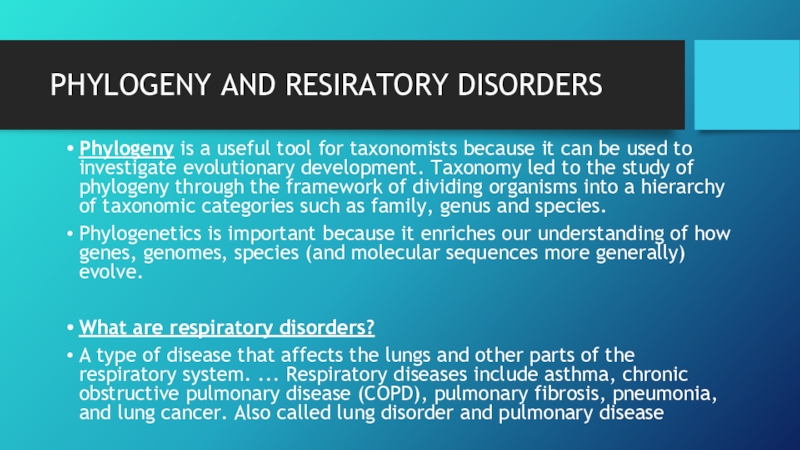
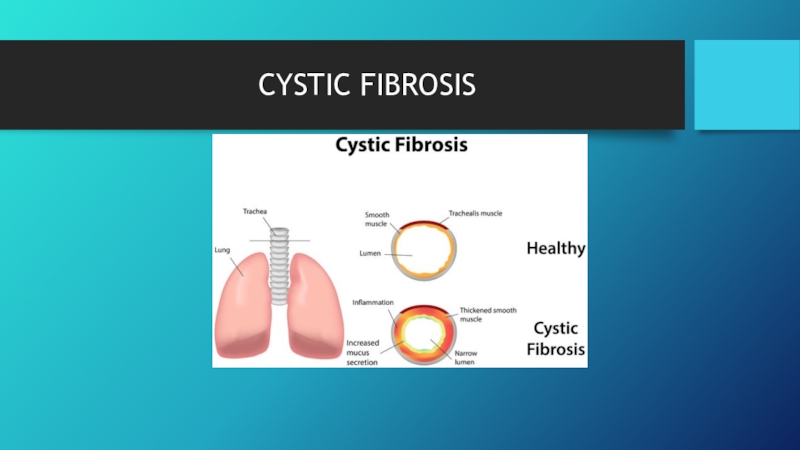
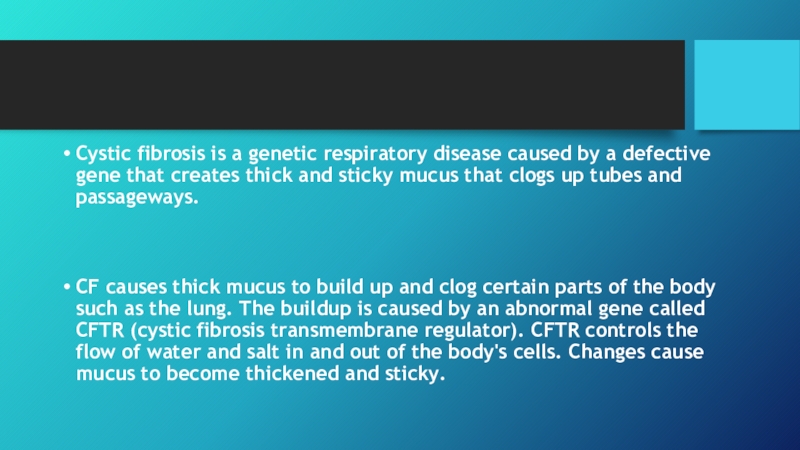
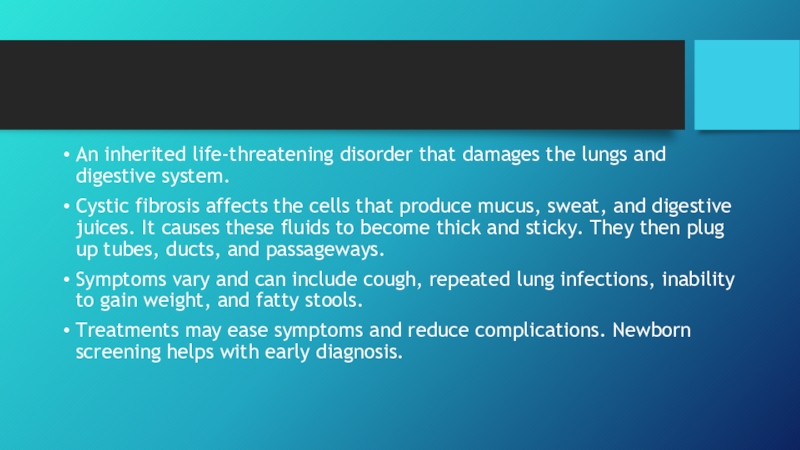
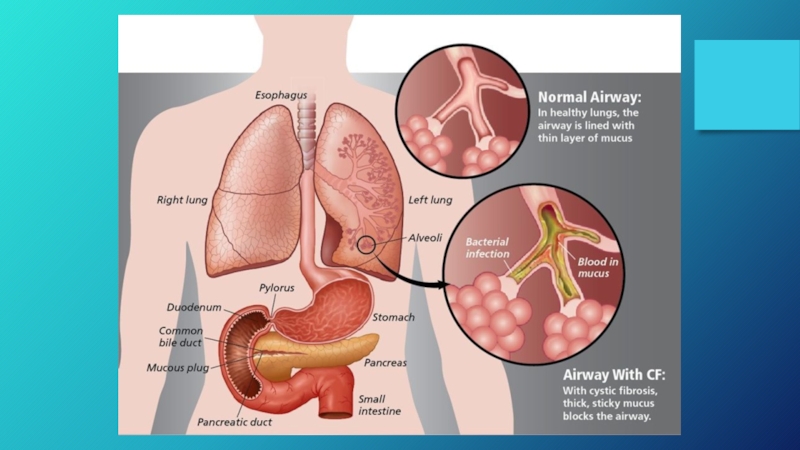
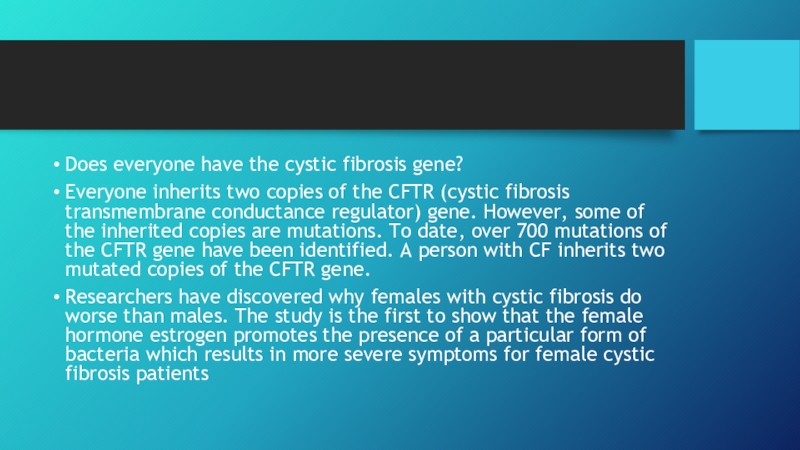

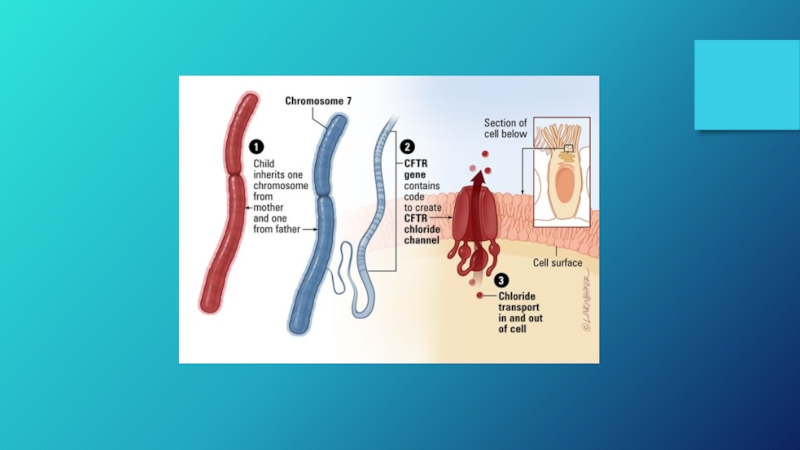
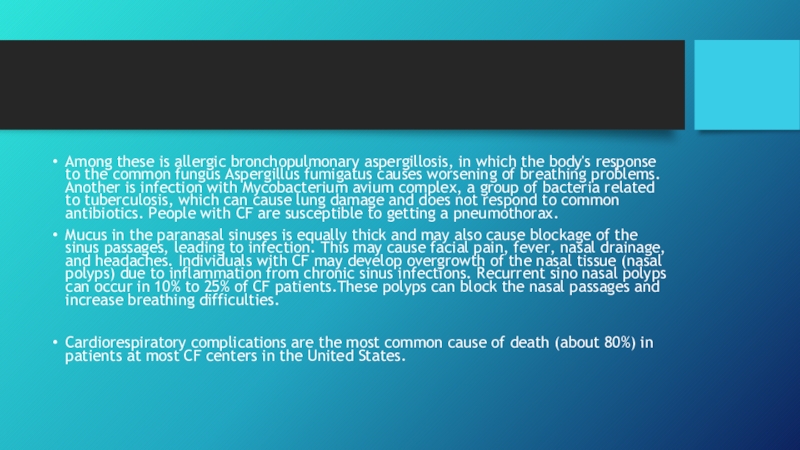

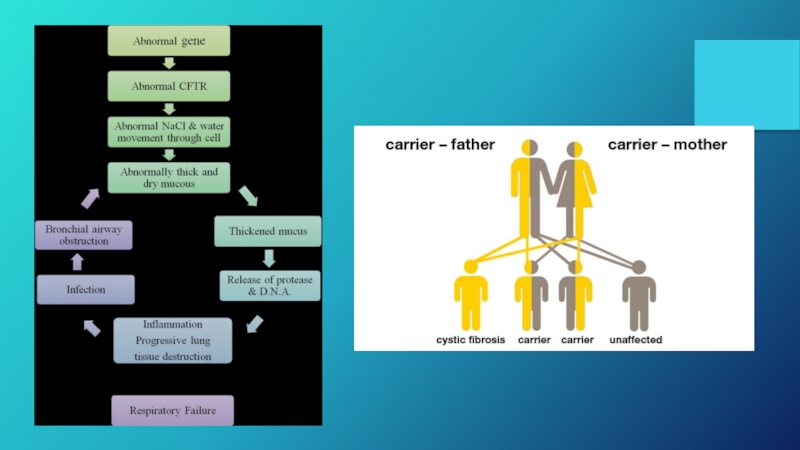
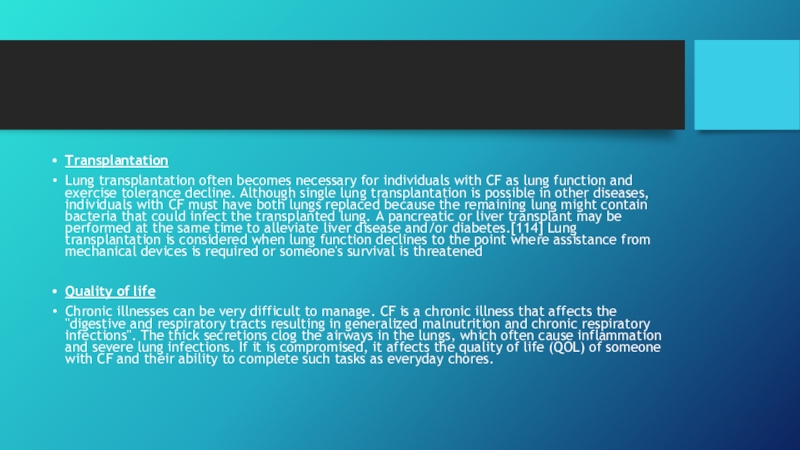
![PHYLOGENETIC DISORDERS OF RESPIRATORY SYSTEM EVOLUTIONThe ΔF508 mutation is estimated to be up to 52,000 years EVOLUTIONThe ΔF508 mutation is estimated to be up to 52,000 years old.[157] Numerous hypotheses have been advanced](/img/tmb/7/622618/2d2a556808dddb0b67ed4bd61f4e84ec-800x.jpg)
